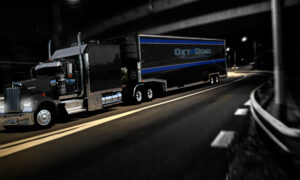Introduction: Exploring Vehicle Transport Options
When it comes to transporting a vehicle that is inoperable or doesn’t run, many individuals find themselves uncertain about the available options. Whether you have recently purchased a non-running car or need to move a broken-down vehicle across long distances, understanding the various transportation methods can be essential. Transporting a vehicle that doesn’t run can be challenging, but it is not an impossible task.
There are several viable solutions to consider, depending on your specific needs and circumstances. From hiring professional car transport services to utilizing tow dollies or flatbed trailers, each option has its advantages and limitations. In this article, we will delve into the different methods of transporting non-running vehicles. We will explore the benefits and considerations associated with each option, as well as provide tips for selecting the most suitable method based on your requirements.
Understanding The Challenges Of Transporting A Non-Running Vehicle
Transporting a non-running vehicle can present several unique challenges that differ from transporting a functioning one. Firstly, the lack of mobility means the vehicle cannot be driven onto a transport truck or trailer, requiring alternative methods for loading and securing. Special equipment such as winches or forklifts may be necessary to safely load and unload the vehicle. Additionally, non-running vehicles often have mechanical issues or missing parts, making them more vulnerable to damage during transportation.
Extra care must be taken to ensure that fragile components are properly secured and protected from potential shifting or impact. Another challenge is related to logistics and planning. It may be more difficult to find carriers willing to transport non-running vehicles due to the additional labor and equipment required. Moreover, since these vehicles cannot be driven, they may need extra time and effort for route planning in order to reach their destination safely.
Hiring Professional Towing Services For Non-Running Vehicles
When faced with the challenge of transporting a non-running vehicle, it is crucial to rely on the expertise of professional towing services. Attempting to move a vehicle that doesn’t run can be complex and risky without the proper equipment and knowledge. Professional towing services have the necessary tools and experience to handle such situations efficiently and safely. They possess specialized equipment designed to securely lift and transport non-running vehicles, ensuring minimal damage during transit.
Moreover, these professionals are well-versed in handling different types of vehicles, including cars, trucks, motorcycles, and even heavy machinery. They understand the intricacies involved in moving a non-operational vehicle without causing further harm or accidents. By hiring professional towing services for your non-running vehicle transportation needs, you can rest assured that your precious asset will be handled with care from start to finish.
Preparing A Non-Running Vehicle For Transportation
Preparing a non-running vehicle for transportation requires careful planning and attention to detail. First, ensure that the vehicle is clean and free of any personal belongings or loose items that could move during transit. Remove the license plates and any accessories that may be damaged or lost during transport. It is crucial to inform the transport company about the condition of the vehicle in advance, as special equipment may be required for loading and unloading.
Additionally, disconnecting the battery is recommended to prevent any potential electrical issues during transit. Next, make sure all tires are properly inflated or consider deflating them slightly if necessary, as this can help with loading onto a trailer. If possible, provide detailed instructions or demonstrate how to safely load and secure the vehicle onto the transportation equipment. Lastly, it is advisable to thoroughly document any existing damages with photographs before handing over your non-running vehicle for transport.
Alternative Methods To Transporting Non-Running Vehicles
Transporting a vehicle that doesn’t run can be a challenging task, but there are alternative methods available that can help you overcome this obstacle. One option is to use a flatbed tow truck, which provides a safe and secure way to move non-running vehicles. These trucks have hydraulic systems that allow them to tilt the bed, making it easier to load and unload the vehicle.
Another method is hiring a professional auto transport company specializing in non-running vehicles. These companies have the necessary equipment and expertise to handle such situations efficiently. They may use specialized trailers with winches or cranes to safely load and unload your non-running vehicle. Additionally, if the distance is short, you could consider renting a trailer or dolly specifically designed for towing cars.
However, it’s essential to ensure that your towing vehicle has the appropriate capacity and capabilities for this task.
Legal And Documentation Requirements For Transporting Non-Running Vehicles
When it comes to transporting a non-running vehicle, there are certain legal and documentation requirements that need to be met. Firstly, you must ensure that you have the necessary permits and licenses to transport the vehicle legally. This may include obtaining a special permit from your local transportation authority or securing a license from the Department of Motor Vehicles. Additionally, it is crucial to have proper documentation in order.
This includes having the vehicle’s title or proof of ownership readily available, as well as any applicable insurance documents. It is important to note that some states may require additional paperwork such as a lien release if there are outstanding loans on the vehicle. Furthermore, it is advisable to inform relevant parties such as your insurance company and any lienholders about your intention to transport a non-running vehicle.
This ensures compliance with legal obligations and prevents potential complications during transit.
Conclusion: Making An Informed Decision For Transporting Your Non-Running Vehicle
Transporting a non-running vehicle can be a complex decision, and it is essential to make an informed choice that best suits your needs. Before proceeding, consider the condition of your vehicle, the distance to be traveled, and your budgetary constraints. If the car requires extensive repairs that exceed its value, it may be more cost-effective to sell it locally or donate it instead of transporting it.
However, if the vehicle holds sentimental value or has significant potential for restoration, hiring a specialized transport service might be the best option. Ensure you research reputable transport companies and obtain multiple quotes to compare costs and services. Additionally, communicate clearly with the transport provider regarding any specific requirements for loading and unloading non-operational vehicles. By carefully evaluating all aspects involved in transporting your non-running vehicle, you can make a well-informed decision that aligns with your goals and financial considerations.







